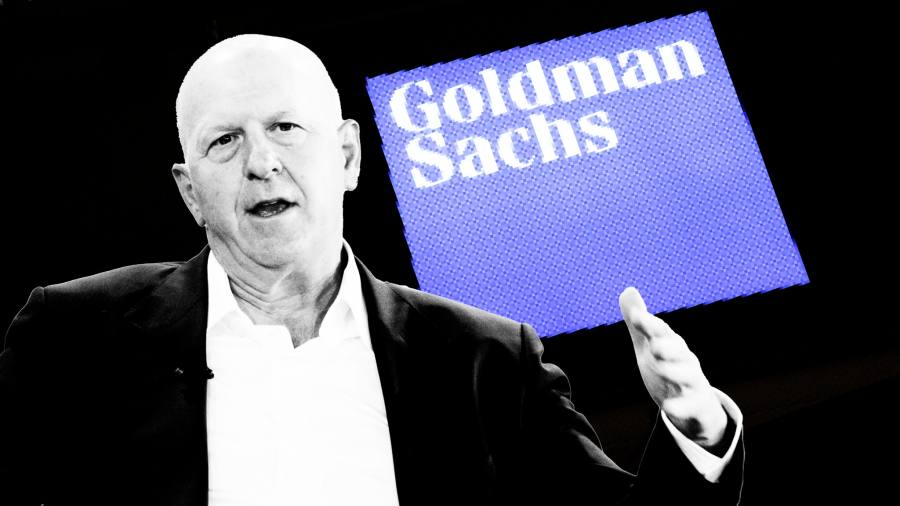
Earlier this week, Goldman Sachs announced another major shift in strategy. Chief executive David Solomon is ditching the plan to build a mass-market consumer banking brand and will instead double down on rich people.
Long considered Wall Street’s premier investment bank, Goldman has been under pressure for years to find other sources of income to even out the inevitable swings in the revenue it gets from trading and dealmaking. Shareholders watched with envy as the likes of UBS and Morgan Stanley built up wealth management arms that generated steadier fees.
Now Solomon is heading down a similar path, but years later. So how is Goldman going to find the clients it needs to catch up?
In simpler days, brokers and wealth managers trolled for clients at retail banks, in department stores and on television with some of the US’s most memorable adverts. Smith Barney “made money the old-fashioned way” and EF Hutton bragged that when it talked, “people listen”.
Today’s fractured media landscape makes that more difficult, particularly because Goldman is now seeking only the cream of the crop, or as Solomon delicately put it, the “wealth adjacent”. As a rule of thumb, wealth managers serve clients with at least $1mn in investable assets, while “ultra-high net worth” investors with $30mn or more qualify for more personalised service.
Lawyers, accountants and retail banks are traditional sources of referrals. Investment banking provides another pipeline: when a company floats or sells itself, the cash proceeds often make multimillionaires (or more) of the top executives, who then need high-end lucrative advice.
But Goldman will need more than that. Solomon’s not-so-sneaky plan is to leverage the bank’s budding and profitable franchise in corporate financial advice. “The building blocks are in place,” he said. “We think it’s a big opportunity for the firm.”
More than half the companies in the Fortune 100 already hire Goldman to provide some kind of financial counselling to their employees. The bank has gradually built its offering with bolt-on acquisitions including Ayco, United Capital and NextCapital. It now provides everything from robo-advice on whether to rent or buy a house to a white-glove service that helps top executives with financial planning, writing wills and filing their taxes.
That last service, provided by Ayco, has a 98 per cent customer satisfaction rating and many executives continue to pay for it even after they retire or change jobs, says Joe Duran, Goldman’s co-head of personal financial management.
“We have to serve younger clients even before they are really perfect clients for us,” he says. “We like to be the most trusted financial adviser they have in their lives.”
This strategy makes good sense. More than $70tn in assets will be passed on to younger generations and charities between now and 2042, and an estimated 70 per cent of heirs expect to change financial advisers at the same time, according to research from Cerulli Associates. This creates a gigantic opportunity.
But Goldman will have competition. Morgan Stanley, which draws about half its revenue from wealth and investment management, is already finding ways to appeal to younger generations.
While Goldman is leveraging financial counselling, Morgan Stanley’s secret sauce is its dominant position in managing employee stock plans. The bank has been in the business for more than 40 years and oversees $2tn in stock plan assets for 6.2mn employees, half the US market.
That creates an early connection to 6.2mn people who may someday be rich. Even better, most of them hold their shares through ETrade, the online trading platform that Morgan Stanley bought in 2020 to give it a leg up with younger investors.
“The average high net worth investor is in her early sixties, but the average workplace employee is in her early forties,” says Brian McDonald, who heads Morgan Stanley at Work. “Workplace helps bring in that new generation. Our goal is to be the first investment account they open.”
So far, the strategy seems to be working. Between 2019 and 2021, there was a fivefold increase in financial flows from Morgan Stanley’s workplace offering to its financial advisory business. The business generates 50 cents of revenue for every $100 of assets it brings in, leading chief executive James Gorman to boast last week that it is a “completely different business model because of workplace . . . an unbelievable revenue machine”.
These days, when Morgan Stanley talks, people listen.
Follow Brooke Masters with myFT and on Twitter